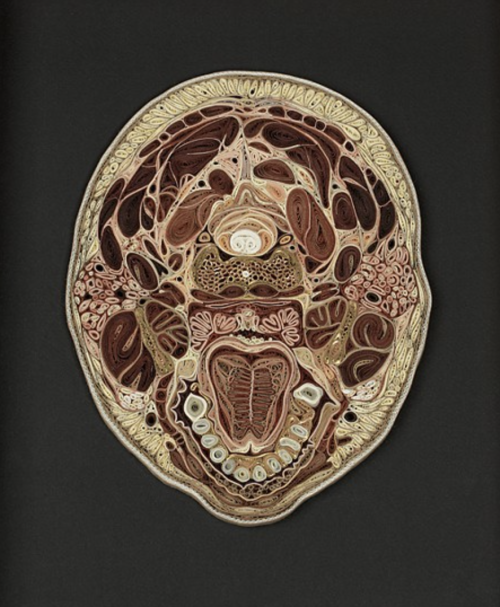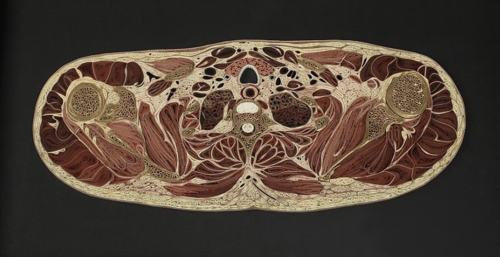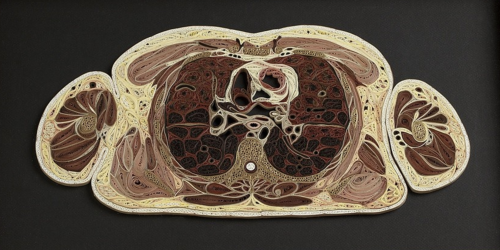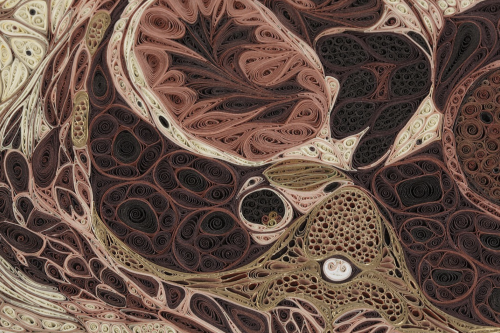(Image Caption: Motor Neurons (green) Form Synapses (highlighted In Magenta) On Muscle Fibers In A Fruit

(Image caption: Motor neurons (green) form synapses (highlighted in magenta) on muscle fibers in a fruit fly. MIT neuroscientists have discovered a pathway that contributes to strengthening these synapses. Credit: Troy Littleton)
Neuroscientists reveal how the brain can enhance connections
When the brain forms memories or learns a new task, it encodes the new information by tuning connections between neurons. MIT neuroscientists have discovered a novel mechanism that contributes to the strengthening of these connections, also called synapses.
At each synapse, a presynaptic neuron sends chemical signals to one or more postsynaptic receiving cells. In most previous studies of how these connections evolve, scientists have focused on the role of the postsynaptic neurons. However, the MIT team has found that presynaptic neurons also influence connection strength.
“This mechanism that we’ve uncovered on the presynaptic side adds to a toolkit that we have for understanding how synapses can change,” says Troy Littleton, a professor in the departments of Biology and Brain and Cognitive Sciences at MIT, a member of MIT’s Picower Institute for Learning and Memory, and the senior author of the study, which appears in the Nov. 18 issue of Neuron.
Learning more about how synapses change their connections could help scientists better understand neurodevelopmental disorders such as autism, since many of the genetic alterations linked to autism are found in genes that code for synaptic proteins.
Richard Cho, a research scientist at the Picower Institute, is the paper’s lead author.
Rewiring the brain
One of the biggest questions in the field of neuroscience is how the brain rewires itself in response to changing behavioral conditions — an ability known as plasticity. This is particularly important during early development but continues throughout life as the brain learns and forms new memories.
Over the past 30 years, scientists have found that strong input to a postsynaptic cell causes it to traffic more receptors for neurotransmitters to its surface, amplifying the signal it receives from the presynaptic cell. This phenomenon, known as long-term potentiation (LTP), occurs following persistent, high-frequency stimulation of the synapse. Long-term depression (LTD), a weakening of the postsynaptic response caused by very low-frequency stimulation, can occur when these receptors are removed.
Scientists have focused less on the presynaptic neuron’s role in plasticity, in part because it is more difficult to study, Littleton says.
His lab has spent several years working out the mechanism for how presynaptic cells release neurotransmitter in response to spikes of electrical activity known as action potentials. When the presynaptic neuron registers an influx of calcium ions, carrying the electrical surge of the action potential, vesicles that store neurotransmitters fuse to the cell’s membrane and spill their contents outside the cell, where they bind to receptors on the postsynaptic neuron.
The presynaptic neuron also releases neurotransmitter in the absence of action potentials, in a process called spontaneous release. These “minis” have previously been thought to represent noise occurring in the brain. However, Littleton and Cho found that minis could be regulated to drive synaptic structural plasticity.
To investigate how synapses are strengthened, Littleton and Cho studied a type of synapse known as neuromuscular junctions, in fruit flies. The researchers stimulated the presynaptic neurons with a rapid series of action potentials over a short period of time. As expected, these cells released neurotransmitter synchronously with action potentials. However, to their surprise, the researchers found that mini events were greatly enhanced well after the electrical stimulation had ended.
“Every synapse in the brain is releasing these mini events, but people have largely ignored them because they only induce a very small amount of activity in the postsynaptic cell,” Littleton says. “When we gave a strong activity pulse to these neurons, these mini events, which are normally very low-frequency, suddenly ramped up and they stayed elevated for several minutes before going down.”
Synaptic growth
The enhancement of minis appears to provoke the postsynaptic neuron to release a signaling factor, still unidentified, that goes back to the presynaptic cell and activates an enzyme called PKA. This enzyme interacts with a vesicle protein called complexin, which normally acts as a brake, clamping vesicles to prevent release neurotransmitter until it’s needed. Stimulation by PKA modifies complexin so that it releases its grip on the neurotransmitter vesicles, producing mini events.
When these small packets of neurotransmitter are released at elevated rates, they help stimulate growth of new connections, known as boutons, between the presynaptic and postsynaptic neurons. This makes the postsynaptic neuron even more responsive to any future communication from the presynaptic neuron.
“Typically you have 70 or so of these boutons per cell, but if you stimulate the presynaptic cell you can grow new boutons very acutely. It will double the number of synapses that are formed,” Littleton says.
The researchers observed this process throughout the flies’ larval development, which lasts three to five days. However, Littleton and Cho demonstrated that acute changes in synaptic function could also lead to synaptic structural plasticity during development.
“Machinery in the presynaptic terminal can be modified in a very acute manner to drive certain forms of plasticity, which could be really important not only in development, but also in more mature states where synaptic changes can occur during behavioral processes like learning and memory,” Cho says.
The study is significant because it is among the first to reveal how presynaptic neurons contribute to plasticity, says Maria Bykhovskaia, a professor of neurology at Wayne State University School of Medicine who was not involved in the research.
“It was known that the growth of neural connections was determined by activity, but specifically what was going on was not very clear,” Bykhovskaia says. “They beautifully used Drosophila to determine the molecular pathway.”
Littleton’s lab is now trying to figure out more of the mechanistic details of how complexin controls vesicle release.
More Posts from Ritasakano and Others


Over geological timescales – on the order of millions of years – even hard substances like rock can flow like a fluid. Heat from the Earth’s core drives convection inside our mantle, and that fluid motion ultimately drives the plate tectonics we experience here at the surface. But most other planetary bodies, including those with mantle convection similar to ours, don’t have a surface that shifts like our tectonic plates. Mars and Venus, for example, have solid, unmoving surfaces. The images above provide a peek at what goes on beneath. The upper image shows a simulation of mantle convection inside Mars over millions of years. The lower image is a timelapse of dye convecting through a layer of glucose syrup being heated from below. Notice how both examples show evidence of convective cells and plumes that help circulate warm fluid up and colder fluid downward. (Image credit: Mars simulation - C. Hüttig et al, source; N. Tosi et al., source; submitted by Nicola T.)

How would the map of Japan with its prefectures look if you translated each kanji into English?
As you may already know, one of the things I fell in love with the Japanese language was kanji. When I studied the map of japan for the first time, I always wondered how would it look translated into English. You could guess some of them like Tokyo meaning “East Capital” or Hiroshima meaning “Wide Island”. But what about the other ones?
Well I finally made a map achieving that. My favorite one was “Love Princess”
Fantástico!!

What’s that green streak in front of the Andromeda galaxy? A meteor. While photographing the Andromeda galaxy last Friday, near the peak of the Perseid Meteor Shower, a sand-sized rock from deep space crossed right in front of our Milky Way Galaxy’s far-distant companion. The small meteor took only a fraction of a second to pass through this 10-degree field. The meteor flared several times while braking violently upon entering Earth’s atmosphere. The green color was created, at least in part, by the meteor’s gas glowing as it vaporized. Although the exposure was timed to catch a Perseids meteor, the orientation of the imaged streak seems a better match to a meteor from the Southern Delta Aquariids, a meteor shower that peaked a few weeks earlier
Object Names: Andromeda Galaxy
Image Type: Astronomical
Credit: Fritz Helmut Hemmerich
Time And Space

Chopin, Bach used human speech ‘cues’ to express emotion in music
Music has long been described, anecdotally, as a universal language.
This may not be entirely true, but we’re one step closer to understanding why humans are so deeply affected by certain melodies and modes.
A team of McMaster researchers has discovered that renowned European composers Frédéric Chopin and Johann Sebastian Bach used everyday speech “cues” to convey emotion in some of their most famous compositions. Their findings were recently published in Frontiers of Psychology: Cognition.
Their research stemmed from an interest in human speech perception — the notion that “happy speech” for humans tends to be higher in pitch and faster in timing, while “sad speech” is lower and slower.
These same patterns are reflected in the delicate nuances of Chopin and Bach’s music, the McMaster team found.
To borrow from Canadian singer-songwriter Feist, we “feel it all” because the music features a very familiar cadence or rhythmic flow. It’s speaking to us in a language we understand.
“If you ask people why they listen to music, more often than not, they’ll talk about a strong emotional connection,” says Michael Schutz, director of McMaster’s MAPLE (Music, Acoustics, Perception & LEarning) Lab, and an associate professor of music cognition and percussion.
“What we found was, I believe, new evidence that individual composers tend to use cues in their music paralleling the use of these cues in emotional speech.” For example, major key or “happy” pieces are higher and faster than minor key or “sad” pieces.
The team also discovered that Bach and Chopin appear to “trade-off” their use of cues within the examined music.
Sets with larger pitch differences between major and minor key pieces had smaller timing differences, and vice versa. This may reflect efforts to balance the cues to avoid sounding trite, Schutz explains.
Schutz and Matthew Poon, a Music alumnus from the Class of 2012, began analyzing a complete body or “corpus” of three 24-piece sets by Chopin and Bach several years ago, as part of an Undergraduate Student Research Award (USRA) project. Poon is now a graduate student at the University of Toronto.
The pair analyzed all 48 preludes and fugues from J.S. Bach’s Well-Tempered Clavier (Book 1); as well as all 24 of Chopin’s Preludes (Op. 28). The pieces were chosen based on their historical significance and enduring popularity amongst performers, educators and audiences.
In order to ensure the tonal areas of each composition stayed in their stated keys, analysis was confined to the first eight complete measures — excluding pick-ups — from each of the 72 pieces.
Previous research on musical emotion has often involved manipulating existing melodies and compositions, Schutz explains. For example, transposing a melody higher or playing a song slower than written, in order to explore changes in emotional responses.
The McMaster-led study built upon that work by exploring how Bach and Chopin used emotional cues in their actual work — music still performed and enjoyed on a regular basis, hundreds of years after it was composed.
Can the same research be applied to modern pop music? Schutz says yes, although it’s much easier to analyze classical music based on the availability of sheet music and detailed notation, he offers.
O monte Bromo (em indonésio: Gunung Bromo; em javanês: Gunung Brama é um estratovulcão ativo da ilha de Java, Indonésia,[1] situado na província de Java Oriental e regência de Probolinggo.
Faz parte do maciço de Tengger e o cume ergue-se a 2 239 metros de altitude. Apesar de não ser o vulcão mais alto do maciço, é o mais conhecido. A cratera tem cerca de 800 m de diâmetro e 200 m de profundidade. O maciço faz parte do Parque Nacional de Bromo-Tengger-Semeru e é uma das áreas de Java Oriental mais visitadas por turistas. O nome Bromo deriva da pronúncia javanesa de Brama, o deus criador do hinduísmo.O vulcão ergue-se no meio de uma planície chamada Mar de Areia (em javanês: Segara Wedi; em indonésio: Lautan Pasir), classificada como reserva natural desde 1919
Bromo Volcano Crater
Os caquis maduros pintam o tempo cinza do inverno.
Caqui a fruta doce do inverno.








Ryohei Tanaka, Persimmons
Lentes gravitacionais.
What is Gravitational Lensing?
A gravitational lens is a distribution of matter (such as a cluster of galaxies) between a distant light source and an observer, that is capable of bending the light from the source as the light travels towards the observer. This effect is known as gravitational lensing, and the amount of bending is one of the predictions of Albert Einstein’s general theory of relativity.

This illustration shows how gravitational lensing works. The gravity of a large galaxy cluster is so strong, it bends, brightens and distorts the light of distant galaxies behind it. The scale has been greatly exaggerated; in reality, the distant galaxy is much further away and much smaller. Credit: NASA, ESA, L. Calcada
There are three classes of gravitational lensing:
1° Strong lensing: where there are easily visible distortions such as the formation of Einstein rings, arcs, and multiple images.

Einstein ring. credit: NASA/ESA&Hubble
2° Weak lensing: where the distortions of background sources are much smaller and can only be detected by analyzing large numbers of sources in a statistical way to find coherent distortions of only a few percent. The lensing shows up statistically as a preferred stretching of the background objects perpendicular to the direction to the centre of the lens. By measuring the shapes and orientations of large numbers of distant galaxies, their orientations can be averaged to measure the shear of the lensing field in any region. This, in turn, can be used to reconstruct the mass distribution in the area: in particular, the background distribution of dark matter can be reconstructed. Since galaxies are intrinsically elliptical and the weak gravitational lensing signal is small, a very large number of galaxies must be used in these surveys.

The effects of foreground galaxy cluster mass on background galaxy shapes. The upper left panel shows (projected onto the plane of the sky) the shapes of cluster members (in yellow) and background galaxies (in white), ignoring the effects of weak lensing. The lower right panel shows this same scenario, but includes the effects of lensing. The middle panel shows a 3-d representation of the positions of cluster and source galaxies, relative to the observer. Note that the background galaxies appear stretched tangentially around the cluster.
3° Microlensing: where no distortion in shape can be seen but the amount of light received from a background object changes in time. The lensing object may be stars in the Milky Way in one typical case, with the background source being stars in a remote galaxy, or, in another case, an even more distant quasar. The effect is small, such that (in the case of strong lensing) even a galaxy with a mass more than 100 billion times that of the Sun will produce multiple images separated by only a few arcseconds. Galaxy clusters can produce separations of several arcminutes. In both cases the galaxies and sources are quite distant, many hundreds of megaparsecs away from our Galaxy.
Gravitational lenses act equally on all kinds of electromagnetic radiation, not just visible light. Weak lensing effects are being studied for the cosmic microwave background as well as galaxy surveys. Strong lenses have been observed in radio and x-ray regimes as well. If a strong lens produces multiple images, there will be a relative time delay between two paths: that is, in one image the lensed object will be observed before the other image.

As an exoplanet passes in front of a more distant star, its gravity causes the trajectory of the starlight to bend, and in some cases results in a brief brightening of the background star as seen by a telescope. The artistic concept illustrates this effect. This phenomenon of gravitational microlensing enables scientists to search for exoplanets that are too distant and dark to detect any other way.Credits: NASA Ames/JPL-Caltech/T. Pyle
Explanation in terms of space–time curvature

Simulated gravitational lensing by black hole by: Earther
In general relativity, light follows the curvature of spacetime, hence when light passes around a massive object, it is bent. This means that the light from an object on the other side will be bent towards an observer’s eye, just like an ordinary lens. In General Relativity the speed of light depends on the gravitational potential (aka the metric) and this bending can be viewed as a consequence of the light traveling along a gradient in light speed. Light rays are the boundary between the future, the spacelike, and the past regions. The gravitational attraction can be viewed as the motion of undisturbed objects in a background curved geometry or alternatively as the response of objects to a force in a flat geometry.

A galaxy perfectly aligned with a supernova (supernova PS1-10afx) acts as a cosmic magnifying glass, making it appear 100 billion times more dazzling than our Sun. Image credit: Anupreeta More/Kavli IPMU.
To learn more, click here.

Olfactory perception influenced by background and semantic information
When two people smell the same thing, they can have remarkably different reactions, depending on their cultural background. Researchers at the Neuro have found that even when two cultures share the same language and many traditions, their reactions to the same smells can be different.
In a partnership with researchers from the Lyon Neuroscience Research Centre in France, clinical neuropsychologist Jelena Djordjevic and her group at the Montreal Neurological Institute tested subjects in Quebec for their subjective impressions of different scents, while their collaborators in France did the same with French subjects. They selected six scents: anise, lavender, maple, wintergreen, rose and strawberry.
Participants were asked to smell each scent first without knowing what the scent is, then again after being told its name. The subjects rated the scent on pleasantness, intensity, familiarity, and edibility. The scientists also measured the subjects’ non-verbal reactions to each scent, including sniffing, activity of facial muscles, respiration and heart rate.
The researchers found significant differences between ratings of the same odours among the French and French-Canadian subjects. For example, the French gave wintergreen much lower pleasantness ratings than French-Canadians. In France, wintergreen is used more in medicinal products than in Canada, where it is found more in candy. Canadians were more familiar with scents of maple and wintergreen than the French, while in turn people from France were more familiar with the scent of lavender. When asked to describe odours, Canadians were better at describing maple and wintergreen, while people from France were better at describing lavender. Anise was rated similarly in two cultures but was described more often as “licorice” in Quebec and as “anise” in France.
Providing the names of the odours to subjects increased their ratings of familiarity, pleasantness and edibility. Furthermore, cultural differences disappeared or decreased when the names were provided. This was true even for the non-verbal reactions to scents. The findings suggest that mental representations activated by odour names are more similar between cultures than the mental representations activated by sensory information alone. Cultural differences in perception of odours are subtle, and are easily reduced by the mere presence of odour names.
The results were published in the journal Chemical Senses.
This study reinforces the idea that our brain’s processing of odour is not simply its reaction to the chemical compounds that make up the scent. It is influenced both by our previous experience with the scent and our knowledge of what the scent is.
While previous studies have come to similar conclusions, this study is unique in that it compared two cultures which share the same language and have similar traditions. This eliminated the possibility of language being a cause of the different reactions between groups.
“In psychology, we call these effects ‘top-down influences’ and we were excited to further develop our understanding of them”, says Djordjevic. “Even basic processes, such as smelling a scent, are influenced by where we come from and what we know. The sense of smell occupies a very old part of our brain. Studying this old sensory system helps us understand how we have evolved as a species. Furthermore, olfactory loss is common in normal aging and also in many neurological conditions. Studying these disorders can provide us with clues about the disease mechanisms and possible ways to treat them.”

Meu canto
Que trabalho maravilhoso!!










Tissue Series
These pieces are made of Japanese mulberry paper and the gilded edges of old books. They are constructed by a technique of rolling and shaping narrow strips of paper called quilling or paper filigree. Quilling was first practiced by Renaissance nuns and monks who are said to have made artistic use of the gilded edges of worn out bibles, and later by 18th century ladies who made artistic use of lots of free time.
- by Lisa Nilsson
-
 woppetry liked this · 9 years ago
woppetry liked this · 9 years ago -
 landofmazesandinsight reblogged this · 9 years ago
landofmazesandinsight reblogged this · 9 years ago -
 forrest-e reblogged this · 9 years ago
forrest-e reblogged this · 9 years ago -
 forbidden-crown-blog liked this · 9 years ago
forbidden-crown-blog liked this · 9 years ago -
 littlesoybean reblogged this · 9 years ago
littlesoybean reblogged this · 9 years ago -
 kconsing liked this · 9 years ago
kconsing liked this · 9 years ago -
 loganbktaylor-blog liked this · 9 years ago
loganbktaylor-blog liked this · 9 years ago -
 disney-she-wrote liked this · 9 years ago
disney-she-wrote liked this · 9 years ago -
 dan-and-confused liked this · 9 years ago
dan-and-confused liked this · 9 years ago -
 nindandan liked this · 9 years ago
nindandan liked this · 9 years ago -
 guility liked this · 9 years ago
guility liked this · 9 years ago -
 rollorcolo liked this · 9 years ago
rollorcolo liked this · 9 years ago -
 radicalrabyplease liked this · 9 years ago
radicalrabyplease liked this · 9 years ago -
 leftfootism reblogged this · 9 years ago
leftfootism reblogged this · 9 years ago -
 greybynature reblogged this · 9 years ago
greybynature reblogged this · 9 years ago -
 plague2427-blog liked this · 9 years ago
plague2427-blog liked this · 9 years ago -
 doomroar liked this · 9 years ago
doomroar liked this · 9 years ago -
 evoifc reblogged this · 9 years ago
evoifc reblogged this · 9 years ago -
 childofthebigbang reblogged this · 9 years ago
childofthebigbang reblogged this · 9 years ago -
 whaticouldbe reblogged this · 9 years ago
whaticouldbe reblogged this · 9 years ago -
 whaticouldbe liked this · 9 years ago
whaticouldbe liked this · 9 years ago -
 queenofeire liked this · 9 years ago
queenofeire liked this · 9 years ago -
 that-kinda-cool-guy reblogged this · 9 years ago
that-kinda-cool-guy reblogged this · 9 years ago -
 that-kinda-cool-guy liked this · 9 years ago
that-kinda-cool-guy liked this · 9 years ago -
 macx-collective reblogged this · 9 years ago
macx-collective reblogged this · 9 years ago -
 macx-collective liked this · 9 years ago
macx-collective liked this · 9 years ago -
 perfectlyawful15 liked this · 9 years ago
perfectlyawful15 liked this · 9 years ago -
 ritasakano reblogged this · 9 years ago
ritasakano reblogged this · 9 years ago -
 ritasakano liked this · 9 years ago
ritasakano liked this · 9 years ago -
 zeeblee liked this · 9 years ago
zeeblee liked this · 9 years ago -
 xanatosv liked this · 9 years ago
xanatosv liked this · 9 years ago -
 ihasquestions reblogged this · 9 years ago
ihasquestions reblogged this · 9 years ago -
 therulesdonotknowme reblogged this · 9 years ago
therulesdonotknowme reblogged this · 9 years ago -
 therulesdonotknowme liked this · 9 years ago
therulesdonotknowme liked this · 9 years ago -
 cdobarrie reblogged this · 9 years ago
cdobarrie reblogged this · 9 years ago -
 cdobarrie liked this · 9 years ago
cdobarrie liked this · 9 years ago -
 leftfootism liked this · 9 years ago
leftfootism liked this · 9 years ago -
 newreau liked this · 9 years ago
newreau liked this · 9 years ago -
 xxcrazymangoxx reblogged this · 9 years ago
xxcrazymangoxx reblogged this · 9 years ago -
 xxcrazymangoxx liked this · 9 years ago
xxcrazymangoxx liked this · 9 years ago -
 properlynervous liked this · 9 years ago
properlynervous liked this · 9 years ago